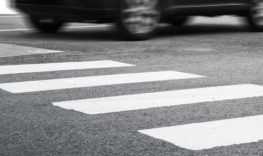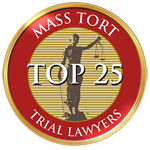An Overview of Pedestrian Accident Injury Lawsuits

Motorists share the roadways of this nation with other cars, big rigs, motorcyclists, bicyclists, and pedestrians. Of these, pedestrians are the most vulnerable group and can be seriously injured – even killed – in collisions that would have only resulted in minor damage to another vehicle. If you or a loved one have been injured in a pedestrian accident, you need experienced and aggressive legal counsel to help you obtain compensation for your injuries. Contact Stern Law, PLLC for help today.
Types of Pedestrian Accidents
Any pedestrian accident in which a pedestrian is struck by a motor vehicle can result in catastrophic injury to the pedestrian (as one would expect, the driver and any passengers in the motor vehicle are generally unarmed). However, pedestrian crashes can be distinguished from one another based on how the pedestrian and motor vehicle collided. By doing this, individuals can better understand the types of injuries most likely to result in a given pedestrian collision as well as the type of evidence that might be available in the event the pedestrian filed a lawsuit against the driver:
- The “up and over” collision: In this type of pedestrian accident, the pedestrian is thrown onto the hood of the motor vehicle and rolls up and over the car, landing behind it. For this to occur, the motor vehicle most likely would have continued traveling beyond the point of impact. This can result in pelvic or leg injuries to the pedestrian (depending on where the bumper first hit the pedestrian) as well as internal injuries as he or she rolls over the car and head, neck, or spinal cord injuries (depending on how he or she landed on the other side of the car). The car itself will usually show a point of impact on the bumper and damage or dents running from the hood to the windshield and then to the roof and rear windshield and/or trunk of the car.
- The “roll over” collision: This type of collision occurs when the pedestrian is caught up under the car and the motor vehicle rolls over the pedestrian. The pedestrian may be completely run over and struck by both sets of tires, or the pedestrian may miss being struck by any tire at all. In addition to the pelvic or leg injuries described above (which occur as a result of the initial contact made between the car and the pedestrian), this type of collision is generally characterized by crushing-type injuries. The pedestrian may be crushed to death. If he or she does survive, the amputation of one or more limbs may be medically necessary. These types of collisions can occur where the motor vehicle made no attempt to stop before hitting the pedestrian. One would expect to find damage to the bumper and undercarriage of the vehicle. Blood, hair, or other biological specimens belonging to the pedestrian may be found on the bumper, tires, and/or under the car.
- The “launch” collision: This final type of collision is most likely to occur when the motor vehicle attempts to stop before striking the pedestrian and is (somewhat) successful in doing so. After being hit by the car, the pedestrian is thrown forward for some distance. He or she may suffer head, neck, and spine injuries as well as “road rash” – serious abrasions to his or her skin – if the pedestrian slides across gravel or cement roadways. Broken bones are also a common injury with this type of collision. The only damage to the car that might be apparent is damage to the bumper where the pedestrian was struck.
What To Do After a Pedestrian Accident
If you are a pedestrian and you find yourself struck by a vehicle, your first concern must be your health. Because of the potential for serious injuries, you should go to the nearest hospital for evaluation and treatment. If you suspect that your head or spinal cord have been injured, do not transport yourself – instead, call an ambulance or a family member or friend and have them transport you.
As soon as you are able to, write down what you remember about the crash. Write down important details such as what you were doing before the crash, what any traffic control signals or signs said just be the crash, a description of the car and driver that struck you, and any statements this person may have made to you. Bring this information to your accident injury lawyer. He or she can use this information in conjunction with the police report to determine what legal remedies you may have and the likelihood that any lawsuit you filed would be successful.
Answers To Your Questions About Pedestrian Accident Cases
Pedestrian Accident
Emergency medical personnel asked if I wanted to go to the hospital. Should I?
It is never a bad idea to seek medical treatment and evaluation following a pedestrian accident, especially if you were struck by a car, thrown any distance, hit your head, or suffered other similar injuries. Even if you do refuse to go to the hospital, you should make an appointment to see your primary care physician as soon as possible. This can help ensure that you are not suffering from some latent internal injury that simply has not manifested itself outwardly yet.
I was jaywalking when I was struck by a car. I heard that the pedestrian crossing a street always has the right of way. Is this accurate?
Jaywalking – crossing a street at a location other than a designated crosswalk – is a violation of some states’ traffic laws. However, any jaywalking statute is rarely enforced. Violations of the law or of your state’s traffic code can be considered evidence of negligence (which can, in turn cause you to lose compensation or be precluded from seeking compensation altogether), but such violations are rarely conclusive and determinative evidence of fault or lack thereof. The facts concerning your act of jaywalking and your pedestrian injury will determine what effect, if any, your act of jaywalking will have on your case.
The car that hit me sped off. What should I do now?
If you are not able to identify the driver who hit you or the person responsible for your pedestrian accident injuries, you may face substantial difficulties in recovering compensation for your injuries and losses. As soon as possible, write down as detailed of a description as possible of the car or other vehicle that struck you. Information you may wish to include would be the color, make, and model of the car. If you are able to identify the approximate year of the vehicle, write this down as well. Note any distinguishing features such as bumper stickers and preexisting damage. Write down as much of the license plate number as you remember as well as the state from which the license plate was issued. If you were able to catch a glimpse of the driver, write down as detailed of a description of him or her as you can. Give this information to the police or local law enforcement. Because “hit and run” is a crime in most every jurisdiction, the police will likely want to find the car and the driver and apprehend him or her.
My doctor said I will likely need medical treatment in the future. Should I wait until my medical treatment is completed before filing a pedestrian injury lawsuit?
Absolutely not! Each state gives injured pedestrians a limited time within which they must file their lawsuits following an accident. Failing to abide by this deadline can result in the dismissal of a claim or lawsuit filed after the deadline expired. Because you can pursue damages to compensate you for anticipated future costs and expenses you will likely incur as a result of your injury, it oftentimes makes little difference to wait until your treatment is complete before filing a lawsuit.
Compassionate, Dedicated Counsel for Injured Pedestrians
Injured pedestrians and their family members looking to hold those responsible for their injuries accountable should contact Stern Law, PLLC at (844) 808-7529 right away.













